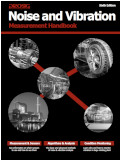The number of active arms in a strain gauge Wheatstone bridge is known as the bridge factor.
As a simple guide when selecting bridge factors the following rules apply;
- When using 1/4 bridge completion the bridge factor should be set to 1
- When using 1/2 bridge completion the bridge factor should be set to 2
- When using full bridge completion the bridge factor should be set to 4
However, it is important to note that these simple rules only apply when the strain gauges are configured in a particular way.
The physical layout of the gauges affects the bridge factor.
If, for example, they are mounted in a transverse configuration for temperature compensation or are mounted on a shaft for torsional analysis then different, and more complex, rules can apply.
Traditionally, due to the nature of the small voltage changes associated with strain gauges any change in amplifier gain or change in excitation voltage should be followed by a calibration.
James Wren
Latest posts by James Wren (see all)
- What Are dB, Noise Floor & Dynamic Range? - January 12, 2024
- How Do I Upsample and Downsample My Data? - January 27, 2017
- What Are Vibration, Torsional Vibration & Shaft Twist? - November 8, 2016

